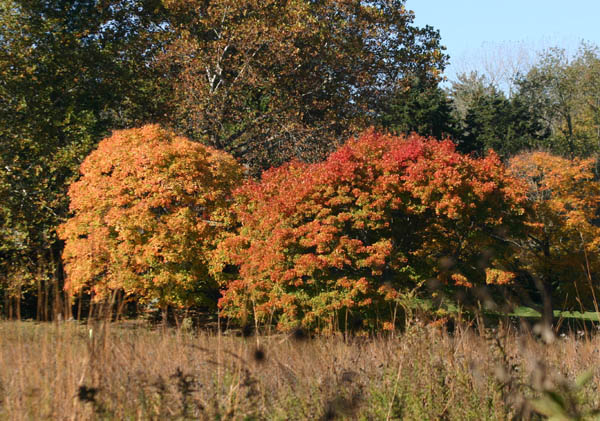
Have you ever wondered what causes the leaves to turn those brilliant shades of red, orange and yellow, and why it seems that the autumn foliage is more colorful some years than others?
Let’s begin with the leaf.
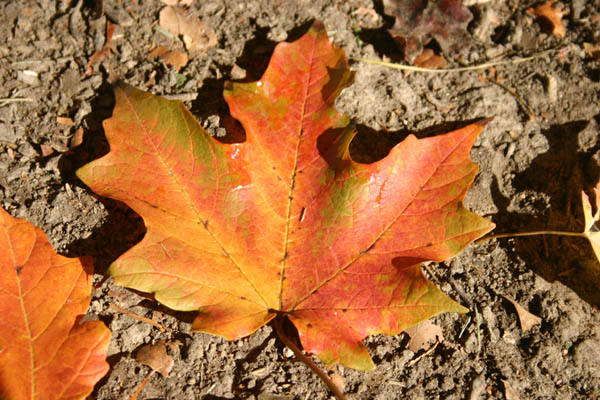
The carotenoids, the pigment responsible for the fall colors, is already present with in the leaf but is concealed by the green color of chlorophyll, the component essential for photosynthesis. The base of each leaf contains a special layer of cells, known as the separation layer, where the exchange of water and food between the leaf and tree takes place.
The leaves are responsible for providing food for the tree and it performs this duty through photosynthesis. In photosynthesis, the leaves use water and carbon dioxide to produce carbohydrates for the tree and oxygen is the by-product of this process. On any given day, the average tree will take in 1-1/2 pounds of carbon dioxide and release about a pound of oxygen into the atmosphere. The leaves also produce more food than is needed and the tree will convert the excess sugar into starch to consume during the winter months.
The shorter hours of daylight and cooler temperatures trigger a reaction that allows the leaves to reveal their autumn colors. During this time, the cells within the separation layer form a cork-like material that cuts the exchange of water and glucose from the leaf. The chlorophyll within the leaf disappears when the water supply is cut off, revealing the hidden oranges, reds or yellows.
The orange leaves are produced from carotene pigments,
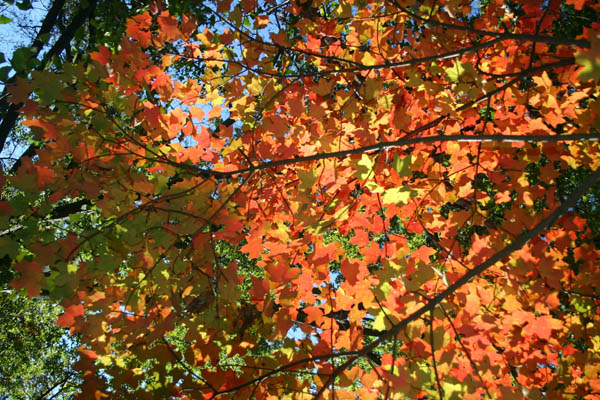
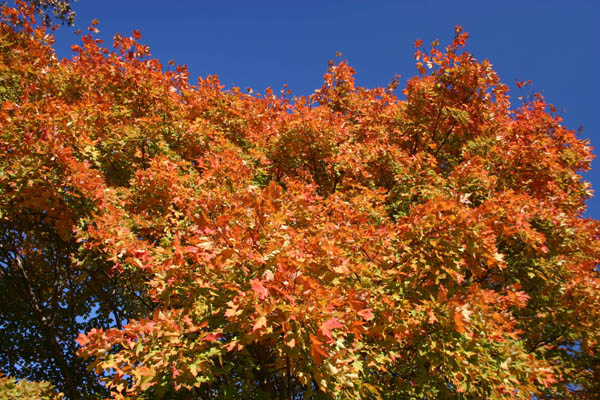
yellow leaves are a result of xanthophyll pigments
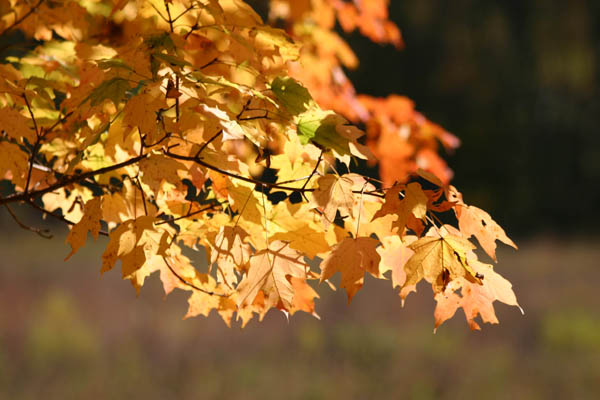
and anthocyanin create the red and purple leaves.

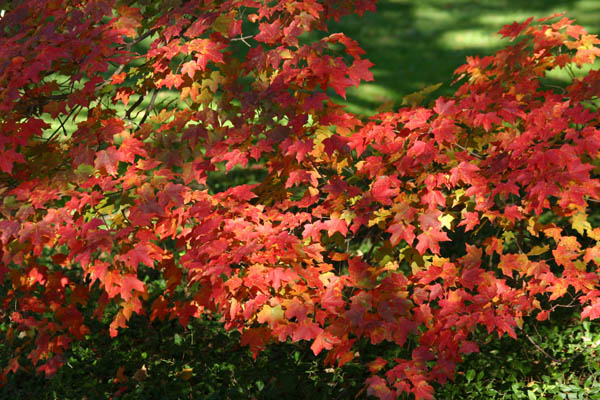
Interestingly enough, not all trees produce anthocyanin and this pigment is only made during the fall months.
Contrary to popular belief, rainfall is not the only factor responsible for the colors of autumn. Sunlight, cloud cover, temperature and soil acidity also determine the intensity and duration of fall’s colorful show. For example, bright light produces anthocyanin. The brighter the sunlight, the more vivid the red and purple leaves. A warm wet spring followed by a summer that is neither too hot nor too dry that leads into a fall with warm sunny days and cool nights will produce a dazzling leaf display.
Now that you know the work the leaves put into their visual displays, I hope you get a chance to go outside and enjoy the last days of Autumn’s splendor.
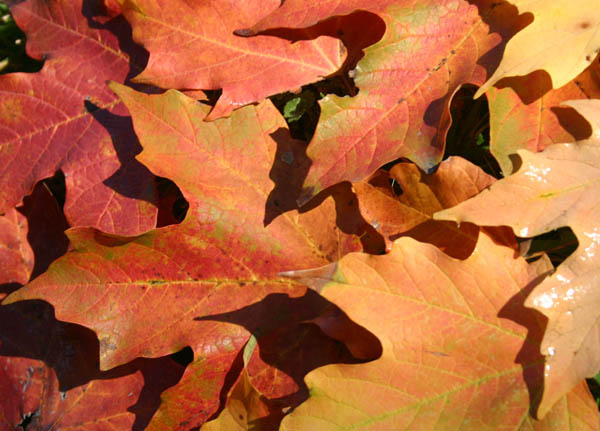
RESOURCES:
Jonas, Gerald. 1993. The Living Earth Book of North American Trees. New York: The Reader’s Digest Association, Inc.
King, John. 1997. Reaching For the Sun: How Plants Work. New York: Cambridge University Press.
Stern, Kingsley. 2000. 8th Edition. Introductory Plant Biology. Boston: McGrawHill.
Science Made Simple
Wisconsin DNR
1 Comment.
Why don’t you publish this as a child’s book. Were the leaf pictures taken by you or someone else?